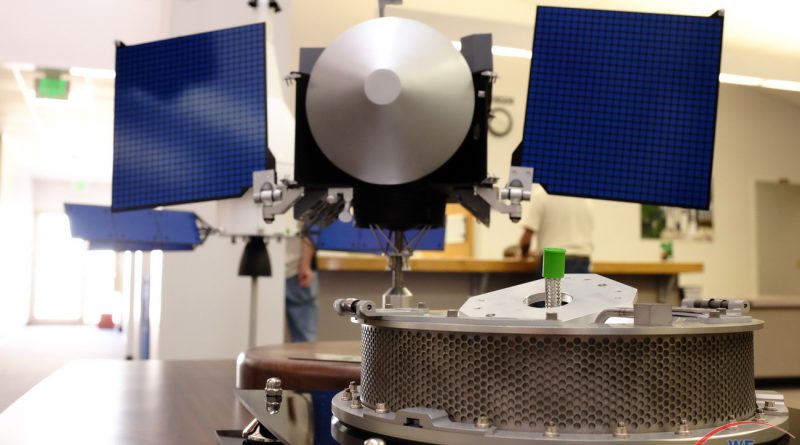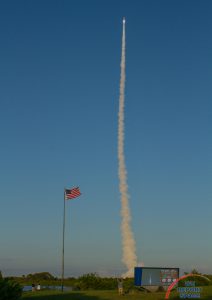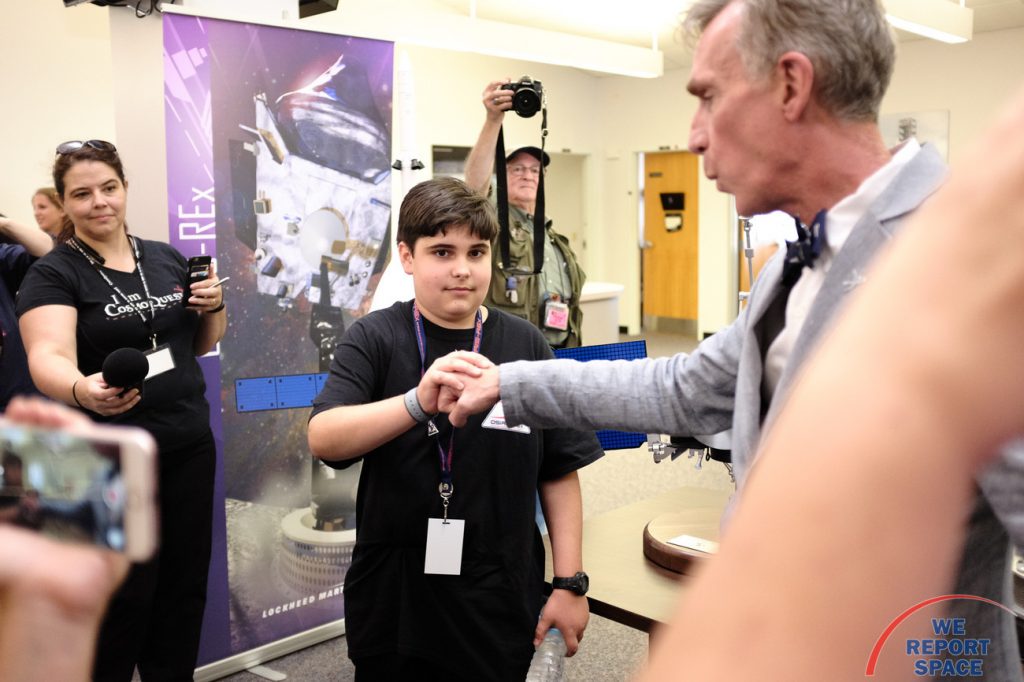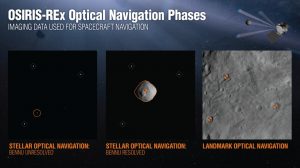What's Next as OSIRIS-REx Approaches Asteroid Bennu

After travelling for over 23 months, the OSIRIS-REx spacecraft has begun an approach phase to rendezvous with asteroid Bennu. Here are key milestones between now and the December 31, 2018 orbital insertion around Bennu:

- August 17, 2018: Approach phase begins. Spacecraft is 1.4 million miles from Bennu. First photographs taken by OSIRIS-REx of Bennu
- September 11-12: Dust plume searchto make sure it is safe to enter asteroid vicinity.
- October 1: Asteroid approach maneuver 1
- October 15: Asteroid approach maneuver 2
- October 17-26: TAGSAM Testing the sample acquisition mechanism
- October 23-28: Natural satellite search to find anything as small as 10cm orbiting Bennu
- October 29: Asteroid approach maneuver 3
- November 12: Asteroid approach maneuver 4
- November 12-December 2: Shape model observations from high resolution imaging
- December 3: Spacecraft arrival at Bennu - at a point 20km from Bennu, the spacecraft will begin proximity operations
- December 4-17: Five flybys
- December 27: Oribital Phase A begins
- December 31: Oribital Insertion
After launch on September 8, 2016 OSIRIS-REx did a flyby of the Earth for a gravity assist in September 2017. Michael Moreau, OSIRIS-REx flight dynamics system manager at NASA’s Goddard Space Flight Center: "Since launch, OSIRIS-REx has done a series of maneuvers in conjunction with the Earth flyby to target the arrival of Bennu this fall. When we flew by the Earth, the flyby changed the plane of our trajectory to align us with Bennu's orbit. In July of 2018 we performed another correction to our trajectory that precisely targeted our arrival at 110,000 miles from Bennu on October 1. On October 1 and again on the 15th, we plan to use the main engine thrusters on the spacecraft to slow our approach with respect to Bennu. The two maneuvers will slow our approach velocity from 1100 MPH to 11 MPH."
"After that, the spacecraft will perform a series of weekly maneuvers to fly us through a precise corridor. Our last maneuver on November 12 will set us up for an arrival at 20km from Bennu on December 3. A series of five flybys will be the most challenging, taking the spacecraft within 7 KM of Bennu. This will allow us to detect the gravitational pull of Bennu and derive the exact mass of Bennu. A maneuver every 48 hours will change the trajectory to allow surveys of the north pole, equator and south pole of Bennu. After these flybys, the spacecraft will drift away for a few days and then perform a series of three maneuvers to insert into orbit around Bennu for the very first time. On December 31, Bennu will become the smallest object to ever be orbited by a spacecraft."
"To give you some perspective, when the spacecraft is on it's first orbit of the Bennu, it will be approximately 1.2 km away from the surface. As a point of comparison, you are used to flying across the country in a commercial airliner at 35,000 feet. You look out the window and you are about 10 km above the ground. Imagine looking out the window and being 10 times closer to the ground. That is the distance that the spacecraft will be from the surface of Bennu."

"Another fact: the orbital velocity around Bennu will be about 0.1 miles per hour." This will allow for detailed imaging of Bennu.
Moreau showed the following graphic to explain navigation techniques. On August 17, 2018 the POLYCAM took the first navigational images of Bennu. Currently, the asteroid is just an unresolved point of light. The relative motion of Bennu against the background of stars is used as a navigation measurement. By mid-October, Bennu will become resolved as shown in the middle pane of the graphic. Navigation at this point will rely on the centerpoint of Bennu with respect to the background starts. Once the spacecraft is in orbit around Bennu, the asteroid will fill the field of view of the camera, so navigation will rely on landmarks on the surface. This technique requires the development of topographic maps and shape models of Bennu.

Up Next: Security: Why Do We Care About Characterizing Bennu

Stunning, full color photo book covering every east coast launch spanning 2014-2015, including the first-ever powered landing of a SpaceX Falcon 9 rocket.
More Info



